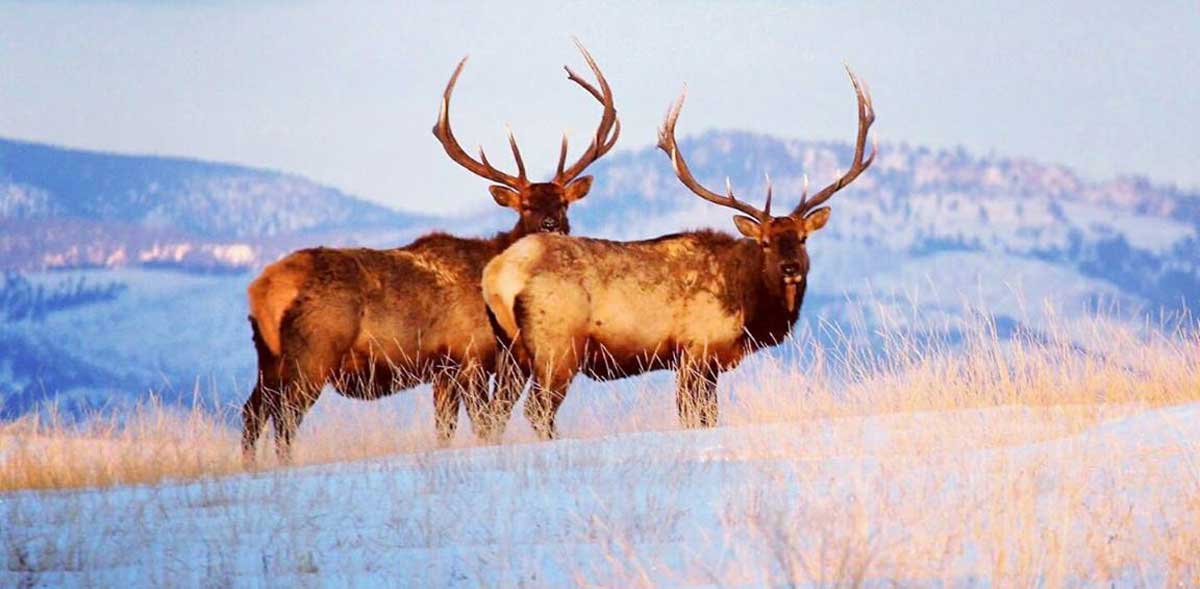In winter, elk may experience temperatures down to 40 below zero. They cope with the plunging temps by shedding their summer coat and replacing it with a thick, woolly parka that is five times warmer.
The winter coat consists of two layers: thick, long guard hairs and a dense undercoat. On the inside, guard hairs look like a honeycomb. Thousands of tiny air pockets fill each hair, making them waterproof and warm. This warm winter coat is so thick it can keep snow from melting on an elk’s back.
Elk can make their hair stand on end, trapping more air and creating an even thicker coat. They also tuck their legs beneath them when they lie down so they lose less heat through their legs, chest and belly.
On cold, sunless days or at night, elk head for the north and east slopes. There they bed beneath dense stands of trees. The trees hold warmer air near the earth, catch snow before it hits the ground, and break the wind. On sunny days, elk move to open south and west slopes.
(Photo c/o Tammy C.)
